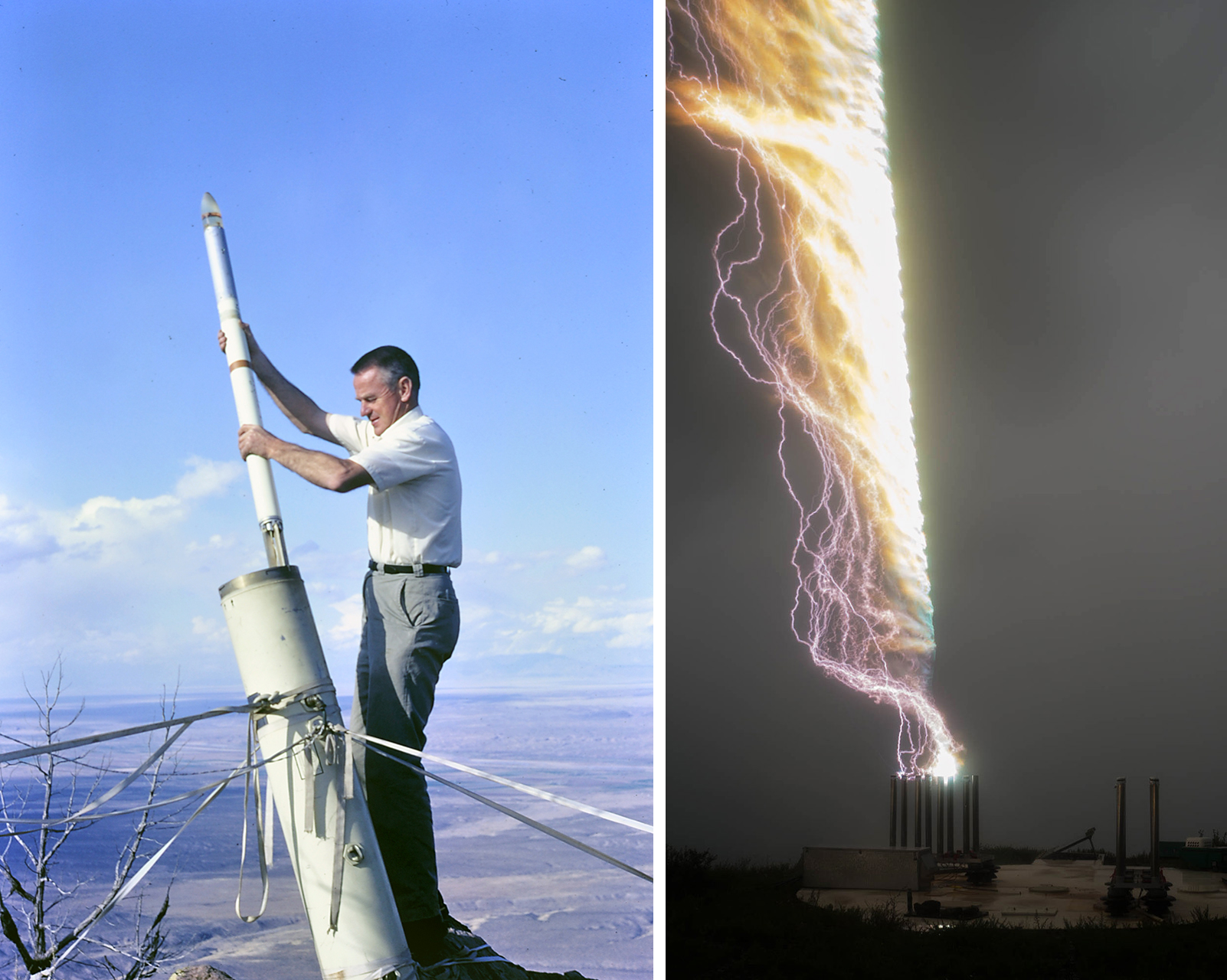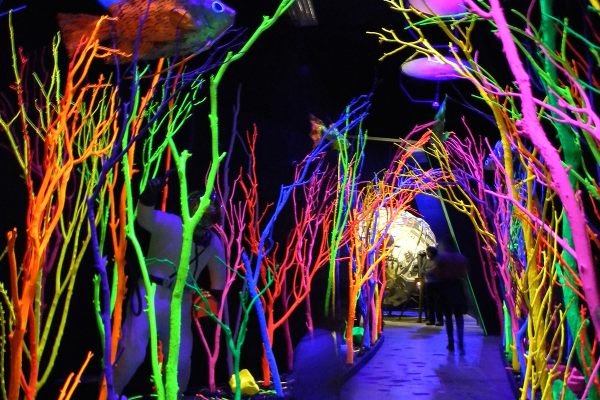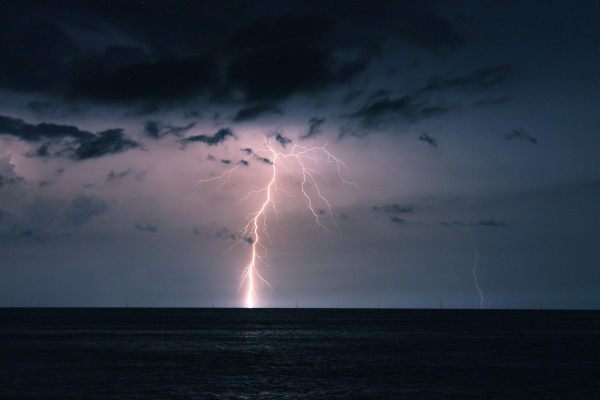
Can America’s Premier Lightning Lab Revive Its Renegade Spirit?
“We want to continue triggering lightning. We’re in no way done with that.”
As a thunderstorm boils up into the mountains of central New Mexico, the researchers at Langmuir Laboratory are checking their rockets, climbing into a steel bunker below the launch pad, and waiting for the right moment to fire into the clouds, hoping that lightning will strike back. From the glass cupola of a control tower about a mile away, Langmuir staff scan the nearby trails for hikers, and signal a five-minute window to the bunker crew.
“Everything has to fall in place perfectly—the storm has to be overhead, everyone has to be ready, and the storm has to build an electric field,” says Harald Edens, director of the atmospheric research facility.
The researchers in the bunker then radio back a five-second countdown. On “Go!” one of them blows into a pneumatic switch that fires the rocket overhead, which is tethered to the launch pad by a steel wire. Watchers in the control tower see a thread of smoke and (if all goes well) a searing jolt of lightning, forking from the ground up into the clouds. Thunder crackles or buzzes, as most of the rumble rolls away. The radio from the bunker transmits excited shouts.

High-speed cameras record the strike at 6,000 frames per second. Played back, the action spans several seconds instead of fractions of a second. Black-and-white images show lightning branching through the sky off this bare peak where, since 1963, scientists have been provoking, measuring, and photographing thunderstorms to better understand how they work.
But it has been six years since anyone triggered lightning at Langmuir. The cutting-edge facility, a seeding ground for lightning researchers, has struggled to secure funding and assemble the many pieces that must align to a trigger a strike. Still, Edens, who became director last year, is striving to renew the lab as a hotbed for lightning research and magnet for motivated students. He also wants to hold onto the site’s roots, which he described to the American Geophysical Union last fall as drawing on the “outlaws and rebels of science,” while searching for new and diverse contracts to help pay the bills.
Langmuir was a foundational place for research on lightning and thunderstorms and the tools used to study them. During World War II, E.J. Workman, then at the University of New Mexico, took an interest in atmospheric electricity and began stockpiling discarded military supplies and instrumentation. In fact, the lab’s “boneyard” still includes a missile silo and jet engine. When the university tried to take a cut of his contracts—standard practice now, but not then—he refused and moved to the New Mexico Institute of Mining and Technology, which still hosts the lab. He secured access to a peak in a nearby national forest, had a narrow dirt road cut in a year (it still requires a high-clearance vehicle), and built the lab for less than $1 million. Soon, scientists were lofting balloon-borne instruments into thunderstorms to measure their inner workings.

“I think that a great deal of what is known about thunderstorm charge and charging probably started there with balloons flights through thunderstorms,” says Martin Uman, who studies lightning at the University of Florida. “They’ve just had generation after generation of really smart people who pushed the field of atmospheric electricity forward.”
A thunderstorm charge initiates lightning, but lightning has its own characteristics and effects, Uman notes. Researchers separate the two, but Langmuir has studied both.
Langmuir drew scientists with an independent streak, willing to tear apart and redesign equipment or build it themselves, and it was, and continues to be, a place for people who dig into off-beat science. Then, that meant stringing a cable between two mountains to attempt to inject thunderstorms with an electrical charge. Now, it means applying rigorous science to eyewitness reports of mysterious ball lightning and other phenomena.

“That’s how Langmuir Lab became big back then—it attracted all these people who could do experiments without too much red tape,” Edens says. “We still have the outlaw aspect a little bit.”
Langmuir is one of few facilities in the world that can actually trigger lightning. And by blasting a steel box at the top of a mountain repeatedly with lightning, they can better understand it simply by getting a good look at it, provided they’ve built equipment that can keep pace with an event that happens in a flash.
“The faster we’re able to measure things, the more we’re able to see, and the more we’re able to understand,” says Bill Rison, who has been with the lab since 1984. “And then of course, the more questions we have about things we didn’t expect to see.”

Rison worked with Paul Krehbiel, another pioneering physicist long associated with Langmuir, designing instruments to reveal an electrical storm’s internal workings. They measured precipitation particles inside clouds, and showed that just before a lightning strike, ice crystals align in the direction of the electrical field. Drawing ideas from the Kennedy Space Center’s lightning detection equipment, they crafted a lightning mapping array, which provides a 3D picture of lightning flashes and can color-code the positive and negative charges within it. That pairs with an interferometer, which reads 100 points where the array sees one, and shows how and in which direction charges develop.
That equipment has measured some of the finer points of thunderstorms, getting at a key question that has hovered around lightning: How does it start? Langmuir researchers submitted evidence for one theory in an article in Nature Communications in 2016 that reported observing hundreds of fast-moving “streamers” or discharges that behaved more like a wave or cloud than a channel. It’s not the answer, Edens says, but a step toward it.

In summer 2020, the laboratory is quiet. Instruments still record storms, and every week or so researchers come up to swap out memory cards and batteries. COVID precautions shut down some planned experiments, but there’s also the issue that Langmuir, like so many research institutions in recent years, has been starved for funding.
“Individuals or committees in funding agencies decide what’s important and what’s not, and in the U.S., the funding and research papers on lightning phenomena have fallen behind,” says Uman, from the University of Florida, which also has facilities to trigger lightning but hasn’t in several years, in part because of funding. “The overall state of science funding in the U.S. could and should be a lot better.”

Across the valley floor from Langmuir, there’s a reminder that not every research facility rebounds. The Sunspot Solar Observatory there, which takes and studies high-resolution images of the sun, now operates just one of its four telescopes. The town that housed its astronomers is mostly abandoned.
So Langmuir is seeing the value in diversification. The search for other sources of funding will see the lab offer contracts for its instrumentation design skills and the rare commodity of its restricted airspace—a call to the Federal Aviation Administration steers jets from overhead—to private companies, as well as Sandia and Los Alamos, the two national labs in New Mexico. Edens remains determined to crack on.
“We want to continue triggering lightning,” he says. “We’re in no way done with that.”

















Follow us on Twitter to get the latest on the world's hidden wonders.
Like us on Facebook to get the latest on the world's hidden wonders.
Follow us on Twitter Like us on Facebook